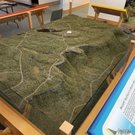Bucolic landscape steeped in history would be marred by solar farm
To the Editor:
You’ve reported on a proposal to construct a large solar panel collection facility at the top of the Altamont Hill. This facility would be constructed smack in the middle of one of our town’s most bucolic and historically significant areas. The proposed facility represents a significant challenge to our ability to preserve our community’s rich, but endangered, natural historic environment.
Amazingly, the facility would be located directly on the property that initially gave rise to Altamont’s original Victorian Summer Colony, a nationally recognized historic area.
The Summer Colony began in the 1880s when my great-great-grandfather William Strevell convinced his wealthy political colleagues to join him in constructing grand Victorian summer homes in a radius surrounding his property. Strevell was part of the so-called second Albany Regency, a group of politically active businessmen who were a guiding force in the state’s Democratic Party. In 1882, this group was instrumental in convincing Grover Cleveland to run for governor. Just two years later, Cleveland was elected as the 22nd president of the United States.
Strevell himself was elected Albany County clerk in 1883. Soon other key members of the Regency began constructing their summer homes within a stone’s throw of Strevell’s home, the subject site for the collection facility. Albany Mayor John Boyd Thacher located his colonial style mansion just across the road. Thacher became enamored of the beauty of our region, feared that it might be marred by inappropriate development, and proceeded to purchase thousands of acres which later became Thacher Park.
Slightly up the road was the home of William van Rensselaer, heir to the patroon, and leader of upstate’s oldest and most influential family. Just to the west is “Coolmore” the home of Judge Rufus Peckham. Originally elected on the same 1883 ticket as Strevell, Peckham was later to achieve national fame as a justice of the United States Supreme Court. Further up is Mira Vista, the home of James D. Wasson, one of the developers of Albany’s Washington Park, and the son of one of the founders of American Express.
Immediately west of the site Colonel Walter Church built his famous Kushaqua Hotel, the social center of the growing Summer Colony. To the south, on what is today Leesome Lane is the palatial home built by Albany’s famous Pruyn-Townsend family. Occupied most recently by the late author Father Joseph Girzone, this architectural gem was built by the oldest son of Robert Pruyn, the man who served as ambassador to Japan under President Abraham Lincoln.
Next in line was the home of Mrs. Lucy Cassidy, widow of the publisher of the Albany Argus, the state’s leading Democratic paper. It was Mrs. Cassidy who suggested that the village take the name Altamont. That suggestion was acted upon in 1890 by her friend in the White House, President Grover Cleveland.
So few communities can claim such a rich historic legacy with so many connections to the larger history of our state and nation. These figures in state and national history were drawn to this particular corner of our little town because of its unique beauty.
Today we are very lucky that this historic residential environment and the bucolic landscape that inspired it is still largely intact. With few exceptions, it has not been altered or marred by out-of-context development and inappropriate commercial uses. The bucolic landscape and the history connected to it remain. But what are we doing as a town to enhance this asset? What are we doing to protect it for future generations?
Does a commercial solar facility add or detract from this historical asset? Does construction of a solar collection facility enhance or protect the unique history of this special corner of town? Does it enhance or protect the particular beauty of this small section that so attracted these national leaders to make our town their home?
The answers seems clear, but the question remains: What are we going to do about it?
Jeff Perlee
Altamont
Editor's note: See related story.
